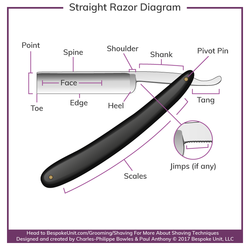Hi all - bought a set of old Straight razors to have a play with on restoring/honing etc.
Found a couple where a fair chunk of the razor had clearly been honed down or ones that weren't a "straight" edge, so would need to be down a bit.
Question is, how far can it go down before it's not usable any more?
Many thanks!
Found a couple where a fair chunk of the razor had clearly been honed down or ones that weren't a "straight" edge, so would need to be down a bit.
Question is, how far can it go down before it's not usable any more?
Many thanks!

